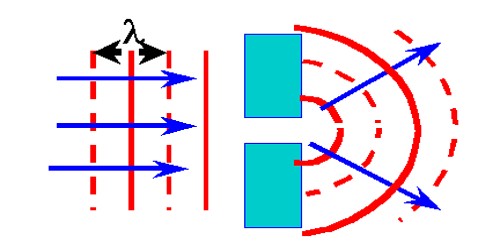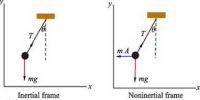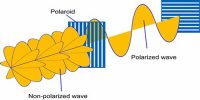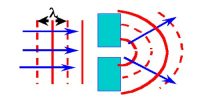Conditions of Diffraction of Light
When light passes through an opening it is observed to spread out. This is known as diffraction and becomes more pronounced with narrower openings. Diffracted light can produce fringes of light, dark or colored bands. It occurs when a light wave passes through a corner or through an opening or slit that is physically the approximate size of, or even smaller than that light’s wavelength.
There are two conditions for the production of diffraction: viz –
(1) In case of straight edge: The edge should be very sharp and its width is to be equal to or is of the order of the wavelength λ of light.
(2) In case of thin hole: The diameter of the hole should be extremely small such that it is equal to or is of the order of the wavelength λ of light.
Diffraction is of two types: viz –
(1) Fresnel’s class of diffraction and
(2) Fraunhofer’s class of diffraction.
Fresnel’s class of diffraction: When the source of light and the screen are at a finite distance from the inside obstacle, then the diffraction observed due to the obstacle is called the Fresnel’s class of diffraction.
In Fresnel diffraction:
- Source and screen are not far away from each other.
- Incident wavefronts are spherical.
- Wavefronts leaving the obstacles are also spherical.
- A convex lens is not needed to converge the spherical wavefronts.
In this type of diffraction, wavefronts are generally spherical or cylindrical. This type of diffraction occurs on the straight edge, fine wire, and narrow slit.
Fraunhofer’s class of diffraction: When the source of light and the screen are effectively at an infinite distance from the obstacle or aperture causing diffraction, then that type of diffraction is called Fraunhofer’s class of diffraction.
In Fraunhofer diffraction:
- Source and the screen are far away from each other.
- Incident wavefronts on the diffracting obstacle are plane.
- Diffraction obstacle gives rise to wavefronts which are also plane.
- Plane diffracting wavefronts are converged by means of a convex lens to produce a diffraction pattern.
In this type of diffraction, wavefront incident on the obstacle or aperture is a plane. In order to produce this type of diffraction, a convex lens is placed in front of the lens in such a way as parallel rays come out of it. This diffraction is produced by a single slit, double slits, and grating.















